Microwaves have become indispensable in modern kitchens, offering convenience and efficiency in cooking and reheating food. However, this convenience can quickly turn hazardous if certain materials are used inside them. Many users, unknowingly or out of habit, place materials in their microwaves that pose significant risks, including fire hazards and health concerns. Understanding what you should never put in your microwave is crucial for the safety and longevity of the appliance. This post aims to enlighten readers about various materials that are a big no-no for microwaving, ensuring you can use your appliance safely and effectively.
Contents
Metal and Foil

Placing metal and foil inside a microwave is a recipe for disaster. When microwaved, these materials can cause sparks that may lead to fires or even explosions. The microwaves bounce off metal surfaces, creating an electrical current that can result in a hazardous situation. This is particularly dangerous in compact microwaves, where the metal is closer to the appliance’s walls. Additionally, the intense heat generated can cause irreparable damage to the microwave’s interior, leading to costly repairs or the need for a replacement.
Despite common knowledge, many still inadvertently microwave metal. This often happens when people heat food in foil containers or forget to remove the foil seal on certain food items. Another misconception is that some metals are “microwave-safe.” While there are exceptions, the general rule remains to keep all metals out of the microwave. It’s important to thoroughly check your food containers and remove any metal elements before heating. Simple oversights, like leaving a spoon in a bowl, can have dangerous consequences, making vigilance key.
Plastic Containers

Heating food in some plastic containers in the microwave can be harmful. Certain plastics, when exposed to high temperatures, can leach chemicals into food. This is particularly concerning with containers not designed for microwave use, as they can release toxins like BPA and phthalates. Besides the health risks, these plastics can also melt or warp under high heat, potentially ruining both the food and the microwave. It’s not just about the immediate danger; repeated exposure to these chemicals can have long-term health implications.
To ensure safety, it’s crucial to use only microwave-safe plastics. These are typically marked with a microwave-safe symbol or specific labeling. However, not all containers with this label are created equal. Some are safe for single use, while others can be used multiple times. It’s also important to avoid reusing disposable plastic containers, like takeout boxes, as they are not designed for repeated exposure to microwave heat. Understanding these distinctions helps in making informed decisions about which plastics are safe for microwave use, safeguarding both your health and your appliance.
Styrofoam Products
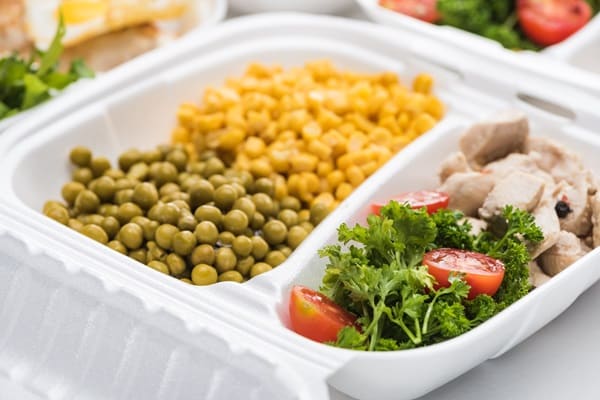
Styrofoam, a common material for takeout containers and cups, is a no-go for microwaving. This foam material is made of polystyrene, which can melt and potentially release harmful chemicals when heated in a microwave. The melted Styrofoam can contaminate the food, posing health risks and also creating a mess inside the microwave. Furthermore, the structural integrity of Styrofoam containers is compromised under heat, leading to spills and leaks that can damage the microwave’s interior.
Fortunately, there are safer alternatives to Styrofoam for heating food in the microwave. Glass and ceramic containers are excellent choices, as they are generally microwave-safe and do not pose the same health risks. Some plastics are also safe, provided they are labeled as microwave-safe. It’s always better to transfer food to a known safe container rather than risking it with Styrofoam. This simple step ensures your safety and helps maintain the quality and taste of your food. Remember, when in doubt, opt for a container that you’re certain is microwave-friendly.
Travel Mugs and Thermoses
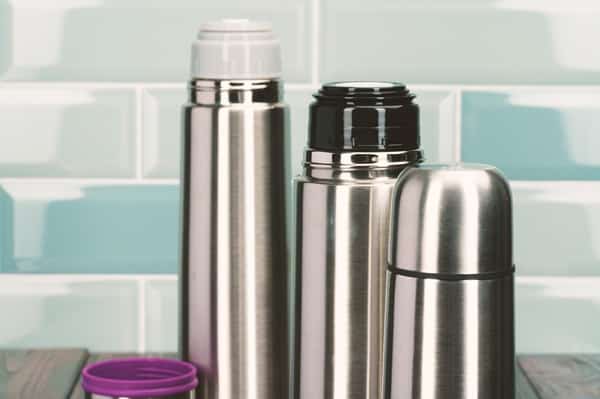
Microwaving travel mugs and thermoses can be more dangerous than most people realize. These containers are designed to insulate, meaning they keep liquids hot by trapping heat. When microwaved, the heat gets trapped inside, creating pressure that can lead to the container exploding. This not only poses a risk of injury but can also cause significant damage to the microwave. Moreover, the insulation properties of these containers can be compromised, rendering them less effective or completely useless.
To safely reheat beverages, it’s advisable to transfer them to a microwave-safe mug or container. While this might seem like an extra step, it ensures safety and preserves the functionality of your travel mug or thermos. It’s also important to note that even if a travel mug claims to be microwave-safe, it’s best to err on the side of caution. The materials used in some mugs might withstand the microwave heat, but the seal or insulation layer could still be damaged. By taking these precautions, you can enjoy your hot beverages without risking your safety or the integrity of your microwave.
Paper Bags and Newspapers
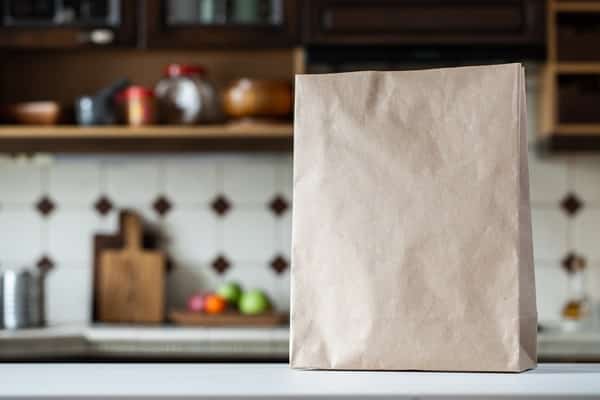
Microwaving paper bags and newspapers is a significant fire hazard. Paper, particularly when crinkled or folded, can easily ignite when exposed to the intense heat inside a microwave. This risk is compounded if the paper has absorbed oil or grease, which can lower its ignition point. In addition to the fire risk, newspapers and printed paper bags often contain inks and dyes that can release toxic fumes when heated. These fumes not only pose a health risk but can also impart an unpleasant taste to your food, ruining your meal.
Instead of using paper products, opt for microwave-safe alternatives like wax paper, parchment paper, or microwave-safe plastic covers. These materials are designed to withstand microwave heat without the risks associated with paper bags and newspapers. Wax paper, in particular, is a good option for covering food as it prevents splattering and retains moisture, without the fire risk. By making this simple switch, you can significantly reduce the risks associated with microwaving and ensure that your food is both safe to eat and delicious.
Fruit and Vegetables
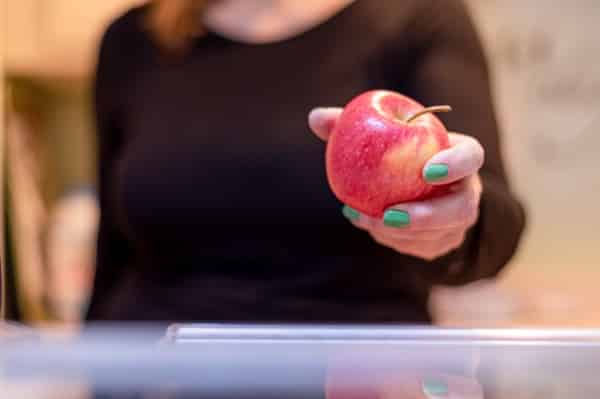
Microwaving whole fruits and vegetables without proper preparation can be dangerous. Certain fruits and vegetables, such as grapes and potatoes, can explode in the microwave due to the buildup of steam inside their skins. This not only creates a mess but can also damage the microwave. Moreover, the uneven heating typical of microwaves can result in partially cooked, potentially hazardous food. It’s essential to understand that while microwaves are convenient, they may not always be the best method for cooking every type of produce.
To safely microwave produce, take the time to prepare them correctly. For fruits and vegetables with skins, like potatoes or apples, pierce the skin several times with a fork to allow steam to escape. Also, use a microwave-safe dish and cover the food with a microwave-safe lid or wrap to ensure even cooking. These steps help prevent explosions and ensure that your fruits and vegetables are cooked properly, making them safe to eat. Remember, a little preparation can go a long way in ensuring both safety and quality when using your microwave.
Eggs and Shellfish
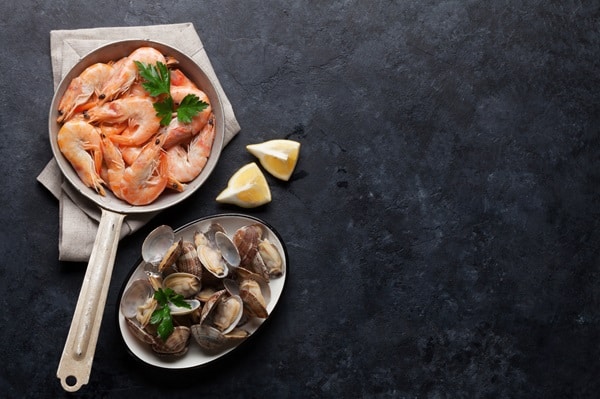
Microwaving eggs in their shells is a recipe for disaster. The rapid heat causes pressure to build up inside the shell, often leading to explosions that can make a mess of your microwave and potentially cause burns. Similarly, shellfish like clams, mussels, and oysters can explode when microwaved in their shells due to steam buildup. Beyond the mess and danger, these explosions can also unevenly cook the food, making it unsafe to eat. Therefore, avoiding microwaving these items in their natural casings is crucial.
If you need to microwave eggs or shellfish, there are safe ways to do so. For eggs, crack them into a microwave-safe bowl, pierce the yolks, and cover the bowl before microwaving. This allows the steam to escape and cooks the eggs evenly. For shellfish, remove them from their shells and place them in a microwave-safe dish, covered with a lid or wrap. These methods ensure that your food is cooked safely and evenly without the risk of explosions or undercooking. Always remember that understanding the proper way to microwave different foods can significantly enhance your cooking experience and safety.
Nothing at All (Empty Microwave)
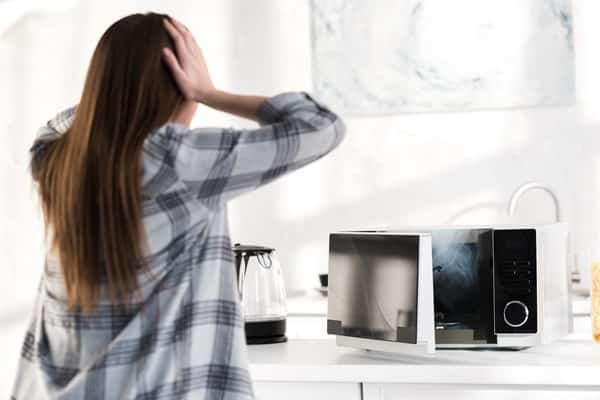
Running a microwave empty is a mistake that can lead to severe damage. When there’s nothing inside to absorb the microwaves, the energy bounces around the cavity and is eventually absorbed by the magnetron, the component that generates the microwaves. This can cause the magnetron to overheat and potentially burn out, leading to costly repairs or the need to replace the entire microwave. In some cases, running an empty microwave can even lead to a fire, making it a risky oversight.
To maintain the health of your microwave, it’s essential to follow proper usage guidelines. Never turn on the microwave when it’s empty, and always ensure there’s something inside to absorb the microwaves. It’s also a good practice to regularly clean and inspect your microwave for any signs of damage or wear. Regular maintenance can extend the life of your microwave and prevent accidents. Remember, a microwave is a powerful appliance, and treating it with care and respect is essential for safe and effective use.
Microwave Smart, Stay Safe
The key to microwave safety lies in being mindful of what you put inside it. Avoiding hazardous materials like metal, certain plastics, Styrofoam, and other mentioned items will not only prevent damage to your appliance but also safeguard your health. Remember to always check if an item is microwave-safe before using it. Commit to using your microwave wisely, ensuring a safe kitchen environment. Share this knowledge with friends and family, and let’s all contribute to safer, smarter microwaving practices.


